



Table of Contents
- Apartments/Flats
- Bungalows
- Villas
- Row Houses
- Cottages
- Eco-Friendly Houses
- Traditional Houses
- Condos
- Farmhouses
- Service Apartments
- Studio Apartments
- Kutcha House
- Penthouse
- Duplex
- Treehouse
- Different Types of Materials Used To Build Houses in India
- Faq's
As most of us have lived in flats and apartment buildings most of our lives, the term house is often synonymous with that. And Having grown up in cities, we get to see that majorly. India is a land of diverse culture, language, food and ethnicity and with that the country also has a diverse range of house types that vary based on geographical location, climate, building materials, architectural influences, lifestyle, and financial status.
In this article, we will explore all types of houses, ranging from historic houses to modern-day mansions. Thee unique features of different types of houses and their styles, the advantages and disadvantages of various materials and more. So, let's jump into the world of houses and their types!
Here are some of the most common types of houses found across India:
Apartments/Flats
Apartments or flats are the most popular type of housing in urban India, especially in metropolitan cities. They are part of multi-story buildings that provide basic amenities for comfortable living. Flats can be 1, 2, 3 BHK (bedroom-hall-kitchen) or larger, and often come with additional amenities like gyms, pools, and gardens. Apartments offer a convenient lifestyle with shared security, maintenance, and proximity to workplaces and social infrastructure. They are suitable for singles, couples, and small families looking for affordable housing options in cities. However, apartments may lack privacy and personal outdoor space compared to independent houses.
Apartments
Also Read: Exploring Types of Housing Plots in India
Bungalows
Bungalows are single-story or multi-story detached houses with spacious designs, often surrounded by a garden. They are more expensive than apartments due to the larger living space and land area. Bungalows come in various traditional and contemporary styles and are preferred for their privacy and integration of indoor and outdoor spaces. They offer ample room for customization, expansion, and personalization. Bungalows are suitable for large families, those who value privacy, and those who can afford the higher costs associated with land, construction, and maintenance. However, bungalows may require more time and effort for upkeep compared to apartments.
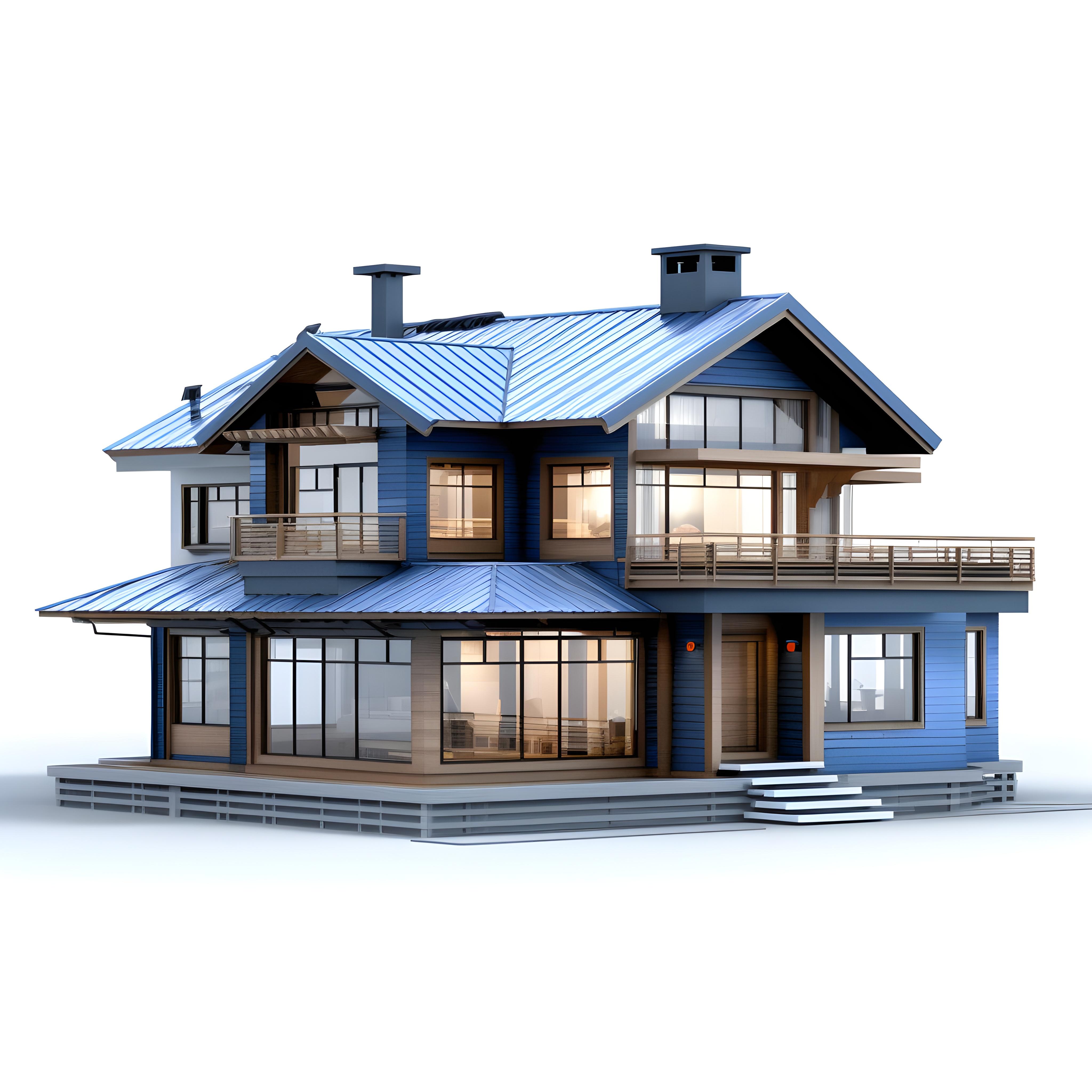 Bungalow
Bungalow
Villas
Villas are luxurious, standalone houses with ample amenities like swimming pools and gardens. They provide the privacy of an independent unit while fostering a sense of community living in gated villa developments. Villas are popular among those seeking a premium lifestyle with modern conveniences. They offer spacious living areas, private gardens, and access to shared facilities like clubhouses, gyms, and sports courts. Villas are designed with high-end finishes and amenities, making them suitable for those who can afford a luxurious lifestyle. However, villas may have higher maintenance costs and require more time and effort to manage.
Vila
Row Houses
Row houses are independent houses built within gated communities, with identical architectural treatments. They combine the benefits of a bungalow and an apartment, allowing for renovations without interference from the builder. Row houses are commonly found in cities like Noida, Gurugram, Pune, Chennai, Bengaluru, and Hyderabad. They offer a balance of privacy, community living, and affordability compared to standalone bungalows. Row houses are suitable for families looking for a compromise between the space of a bungalow and the convenience of an apartment. However, row houses may have limited customization options due to their uniform design and shared walls.
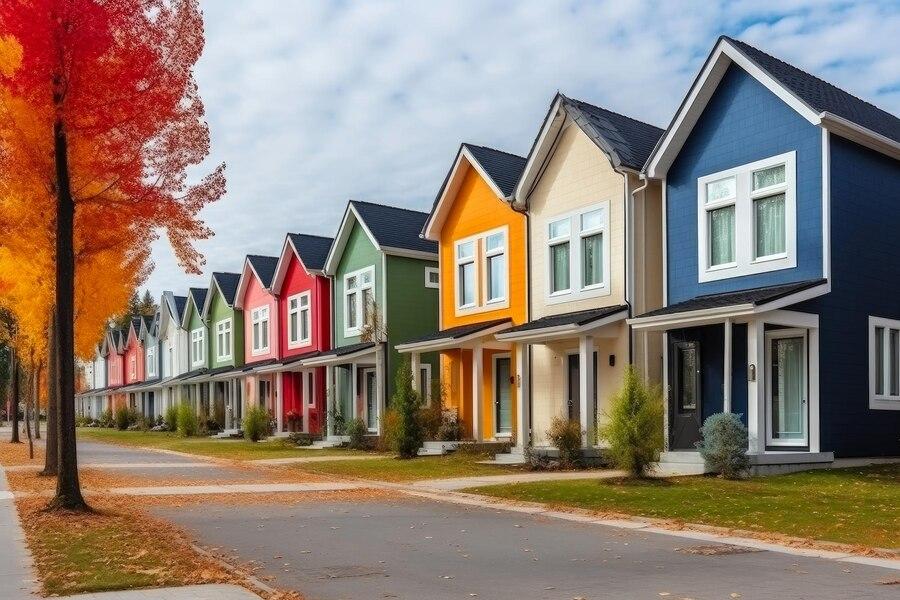 Row Houses\
Row Houses\
Also Read: Your Guide to Buying Row Houses in Pune
Cottages
Cottages are small, cozy dwellings with a rustic charm, often used as vacation homes in rural or semi-rural areas. They are typically single-story houses made of materials like stone, wood, or thatch, reflecting the local climate and culture. Cottages provide a peaceful escape from the hustle and bustle of city life, offering a connection with nature and traditional lifestyles. They are suitable for those seeking a relaxing getaway or a simple, eco-friendly living experience. However, cottages may lack modern amenities and conveniences compared to urban housing options.
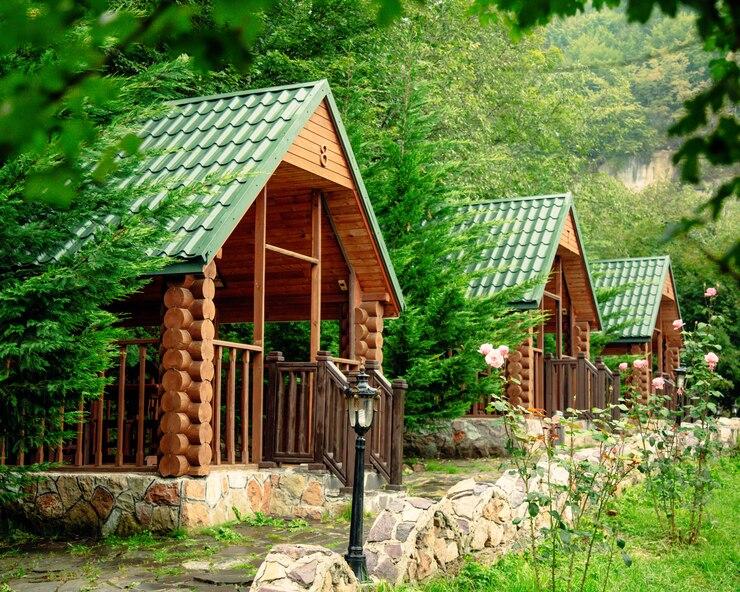 Cottages
Cottages
Eco-Friendly Houses
Eco-friendly houses are designed with sustainable technologies and non-toxic materials to minimize environmental impact. They feature thermal insulation, water conservation systems, ample natural light and ventilation, and renewable energy sources like solar panels. Eco-friendly houses are becoming increasingly popular as people become more conscious of their environmental footprint. They offer long-term cost savings through reduced energy and water consumption, while providing a healthier living environment. Eco-friendly houses are suitable for those who prioritize sustainability and want to reduce their carbon footprint. However, the initial construction costs may be higher compared to traditional houses.
Eco-Friendly Homes with Solar Panels
Traditional Houses
Traditional Indian houses vary across states, using locally available materials and indigenous construction techniques. They often incorporate features like courtyards, verandas, sloping roofs, lattice screens, and overhanging eaves. Examples include havelis, mud houses, and thatched houses. Traditional houses reflect the cultural heritage and architectural styles of different regions, offering a glimpse into the past. They are suitable for those interested in preserving and experiencing traditional lifestyles and building methods. However, traditional houses may require more maintenance and may not offer the same level of modern amenities as contemporary houses.
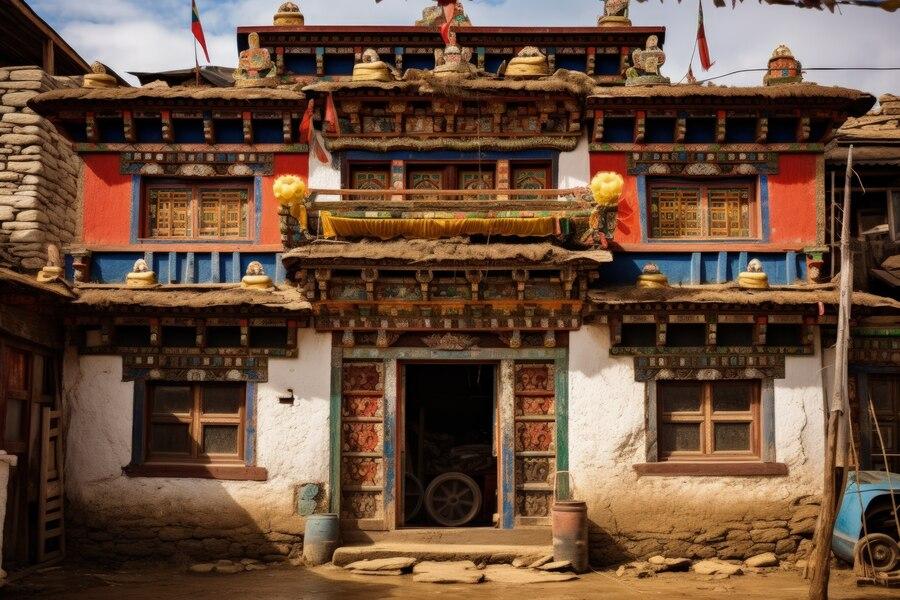 Traditional Houses
Traditional Houses
Condos
Condos, short for condominiums, are a type of housing where individual units are owned by different people within a larger building or community. Condos offer a balance between the privacy of a house and the convenience of shared amenities. Each condo owner has a deed to their individual unit and shares ownership of common areas like lobbies, gyms, pools, and gardens with other residents.
Condos are popular among those seeking the benefits of homeownership without the responsibilities of maintaining a standalone property. They provide a sense of community living while offering a degree of privacy and independence. Condos are often more affordable than single-family homes, making them an attractive option for first-time buyers, young professionals, and small families. However, condo living requires adhering to homeowners' association rules and sharing common spaces with neighbors. Maintenance fees and restrictions on renovations may also be drawbacks for some owners
Condos
Farmhouses
Farmhouses are rural or semi-rural properties that offer a peaceful escape from city life. They are typically located on agricultural land and feature spacious layouts with large front porches or patios. Farmhouses provide a unique opportunity to experience a rural lifestyle while enjoying modern amenities. They are suitable for those seeking a weekend getaway, a hobby farm, or a tranquil retirement home.
Picture a charming homestead, surrounded by fields of crops or blossoming orchards, where the air is filled with the fragrance of wildflowers and the sounds of chirping birds. These idyllic properties often evoke a sense of rustic simplicity and tranquility, offering a welcome respite from the hustle and bustle of city life.
While farmhouses are primarily used as residential dwellings, they also serve as popular vacation homes, allowing city dwellers to escape to the countryside and immerse themselves in a slower pace of living. With their spacious layouts and sprawling landscapes, farmhouses provide ample opportunity for outdoor activities and relaxation.
One of the defining features of a farmhouse is its generous plot of land, which may include sprawling gardens, orchards, or even livestock pastures. This expansive outdoor space often includes front porches or verandas, perfect for sipping morning coffee or enjoying the sunset after a long day.
Farmhouses come in various shapes and sizes, ranging from quaint single-story cottages to grand two-story estates, depending on the available land and the preferences of the owner. Whether used as a primary residence, a vacation retreat, or a weekend getaway, these charming propertie
Farmhouse
Also Read: What is a Farmhouse? Types, Uses, Places to Buy, Decor and More
Service Apartments
Service ApartmentService apartments are fully furnished rental units that provide hotel-like amenities and services. They are popular among business travelers, expatriates, and those looking for short-term accommodation. Service apartments offer the comfort of a home with the convenience of hotel services like housekeeping, laundry, and concierge. They are commonly found in urban areas near business districts and are an attractive alternative to hotels for extended stays.
Studio Apartments
Studio apartments are compact, self-contained living spaces that combine the bedroom, living room, and kitchenette into a single room. They are ideal for singles, couples, or young professionals looking for affordable and efficient housing options. Studio apartments maximize the use of limited space and are often more budget-friendly compared to larger units. They are suitable for those who prioritize convenience, low maintenance, and proximity to urban amenities
Studio Apartment
Kutcha House
A kutcha house, also known as a temporary or makeshift dwelling, refers to a structure constructed with materials that are readily available and easily accessible in the immediate vicinity. Kutcha houses are usually constructed by economically disadvantaged individuals or communities facing resource limitations.
Kutcha houses typically have a simple and rudimentary construction, often lacking proper foundations, sturdy walls, and durable roofs. In many cases, the walls are made of mud or thatch, providing little insulation or protection against the weather. The roofs are thatched or covered with tarpaulin, which leaves them susceptible to damage during heavy rains.
Kutcha House
Also Read: Kutcha Houses and Pucca Houses: Differences, Types, Benefits
Penthouse
A penthouse is a luxurious and exclusive type of housing that offers unparalleled views and amenities. Typically located on the top floor of a high-rise building, a penthouse is a self-contained apartment with its own private entrance. Penthouses often feature spacious rooms, high ceilings, and large windows that provide breathtaking views of the surrounding cityscape. They are equipped with modern amenities such as state-of-the-art appliances, designer furniture, and high-end finishes. Penthouses are ideal for those who value exclusivity, luxury, and the best of everything. They are often used as a symbol of status and wealth, making them a popular choice for celebrities, business executives, and high-net-worth individuals.
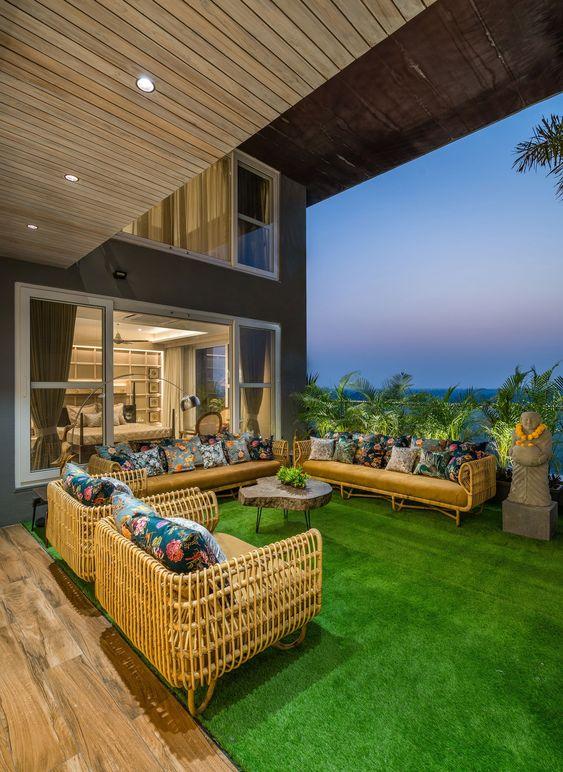 Penthouse, Source: Pinterest
Penthouse, Source: Pinterest
Duplex
A duplex is a type of housing that consists of two separate living units, each with its own entrance and private space. The units can be identical or different in terms of size, layout, and design. Duplexes can be standalone structures or part of a larger building. They offer the benefits of a single-family home with the added convenience of shared walls and a shared roof. Duplexes are popular among families, couples, and individuals who value the flexibility and space that comes with owning a home. They are also a cost-effective option compared to buying two separate homes. With their unique design and layout, duplexes provide a sense of community and shared living experience.
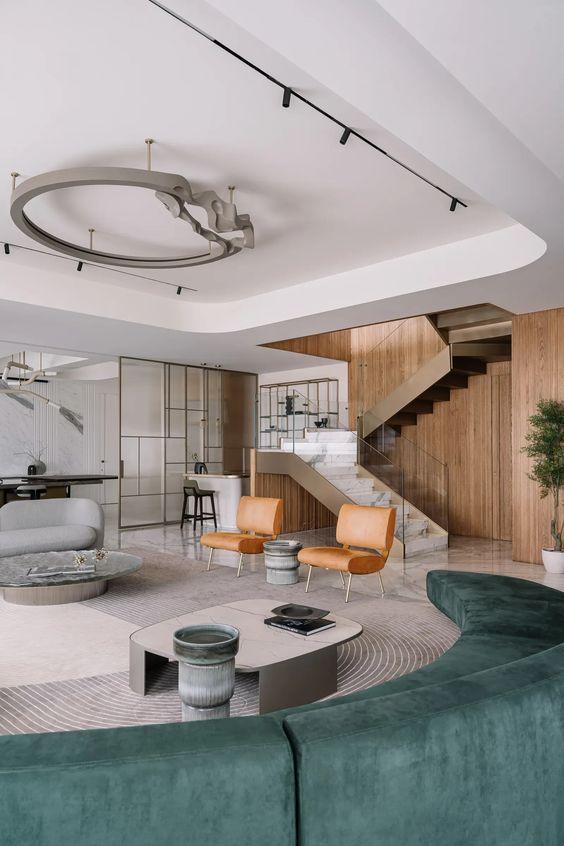 Duplex, Source: Pinterest
Duplex, Source: Pinterest
Treehouse
A treehouse is a unique and whimsical type of housing that is built among the branches of trees. Treehouses can be simple and rustic or luxurious and modern, depending on the design and materials used. They offer a sense of adventure and connection with nature, making them a popular choice for families, couples, and individuals who value the outdoors. Treehouses can be built as a standalone structure or as part of a larger property. They provide a peaceful and serene living experience, away from the hustle and bustle of city life. With their unique design and location, treehouses are a popular choice for those who value exclusivity, luxury, and a connection with nature.
Treehouse
Different Types of Materials Used To Build Houses in India
The materials used in different types of houses in India vary based on factors like location, climate, and cultural preferences. Commonly used materials include:
Bricks
- Bricks are a popular choice for building houses in India due to their strength and durability.
- Bricks are commonly used for walls, foundations, and roofs.
- Bricks offer longevity and structural integrity to buildings.
Concrete
- Concrete, a mixture of cement, sand, and water, is widely used in Indian construction.
- Concrete is applied over and under bricks, providing strength and durability to structures.
- Concrete offers protection against natural calamities and enhances the structural integrity of buildings.
Wood
- Wood is a traditional construction material used in hilly areas for its insulation properties.
- Wood is commonly used for framing, siding, and flooring.
- Wood provides natural insulation and protection against cold weather.
Steel
- Steel is a modern material increasingly used in homebuilding in India.
- Steel is used for framing, wall panels, and structural elements.
- Steel is strong, durable, fire-resistant, and energy-efficient.
Glass
- Glass is an emerging material in Indian homebuilding, known for its energy efficiency.
- Glass is used for walls, windows, and decorative elements.
- Glass allows natural light into homes and helps regulate temperature.
Bamboo
- Bamboo is a fast-growing, sustainable material that is increasingly used in construction.
- Bamboo can be used for framing, flooring, walls, and roofing.
- Bamboo is strong, durable, and eco-friendly. It provides good insulation and is easy to work with.
Rammed Earth
- Rammed earth is a traditional building technique that uses a mixture of soil, gravel, and stabilizers.
- Rammed earth is used to create walls and foundations.
- Rammed earth is durable, fire-resistant, and provides good thermal mass. It is also eco-friendly and can be made from local materials.
Straw Bale
- Straw bale is a renewable material made from compressed straw or other agricultural waste.
- Straw bales are used to create walls and provide insulation.
- Straw bale construction is affordable, energy-efficient, and eco-friendly. It provides good insulation and can be plastered for a smooth finish.
Hempcrete
- Hempcrete is a bio-composite material made from the inner woody core of the hemp plant mixed with a lime-based binder.
- Hempcrete is used for insulation, walls, and plaster.
- Hempcrete is breathable, moisture-resistant, and provides good thermal and acoustic insulation. It is also fire-resistant and pest-resistant.
Ferrocement
- Ferrocement is a thin, reinforced concrete construction material made of wire mesh and cement mortar.
- Ferrocement is used for roofing, walls, and other structural elements.
- Ferrocement is lightweight, durable, and easy to shape. It is also cost-effective and can be used for complex shapes and forms.
explore further
Latest from Editorials
More from Publications
Resources
Dwello, for every home buyer, is a way to go from 'I feel' to 'I know', at no extra cost.




